Today’s Current Affairs: 25th October 2025 for UPSC IAS exams, State PSC exams, SSC CGL, State SSC, RRB, Railways, Banking Exam & IBPS, etc
Table of Contents
Notice to Airmen:
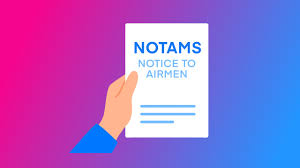
India recently issued a Notice to Airmen (NOTAM) for a large-scale tri-services military exercise, “Ex Trishul,” to be conducted along the Pakistan border.
- Notice to Airmen, also known as Notice to Air Mission, is a notice containing information concerning the establishment, condition, or change in any aeronautical facility, service, procedure, or hazard, the timely knowledge of which is essential to personnel concerned with flight operations.
- In short, a NOTAM is a notification from an official body alerting airspace users to hazards along their route, both in the air and on the ground.
- NOTAMs update pilots about changes in airspace, airports, and equipment that affect aircraft operations.
- NOTAMs are issued by national aviation authorities for a number of reasons, such as:
- Hazards such as air-shows, parachute jumps, and glider or micro-light flying;
- Flights by important people such as heads of state;
- Closed runways, taxiways, etc;
- Unserviceable radio navigational aids;
- Military exercises with resulting airspace restrictions;
- Unserviceable lights on tall obstructions;
- Temporary erection of obstacles near airfields (e.g. cranes).
- For reasons of conciseness and precision, NOTAMs are encoded, although the code is usually sufficiently self-evident to allow the user to identify a hazard.
- NOTAMs are communicated by the issuing agency using the fastest available means to all addressees for whom the information is assessed as being of direct operational significance, and who would not otherwise have at least seven days’ prior notification.
- NOTAMs are typically accessible through online platforms, electronic flight planning tools, and aviation weather services, allowing pilots to conveniently access up-to-date information and make informed decisions regarding their flight activities.
- Pilots who do not review NOTAMs before flight put themselves (and others) in danger.
National Unity Day:
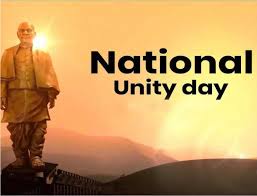
Prime Minister of India will lead the celebrations of National Unity Day at the Statue of Unity in Gujarat’s Narmada Valley on October 31.
- National Unity Day, or Rashtriya Ekta Diwas, is observed on October 31st every year.
- This significant day commemorates the birth anniversary of Sardar Vallabhbhai Patel, a pivotal figure in India’s struggle for independence and the first Deputy Prime Minister and Home Minister of India.
- It was introduced by the Government of India in 2014.
- Renowned for his exceptional leadership and unyielding commitment to national integration, Sardar Vallabhbhai Patel is fondly remembered as the “Iron Man of India.”
- National Unity Day serves as a reminder of his efforts to unite the diverse princely states into a single nation and fosters a spirit of solidarity among the people of India.
- This year marks the 150th birth anniversary of Vallabhbhai Patel.
- One of the key highlights of the day is the Run for Unity, a nationwide marathon held to honor Sardar Vallabhbhai Patel’s vision of a united India.
- Sardar Vallabhbhai Patel was born on 31st October 1875 in Nadiad, Gujarat.
- A successful lawyer by profession, his life encountered a turning point when Mahatma Gandhi chose him as his deputy commander to lead the Kheda Satyagraha in 1918.
- Patel led the Satyagraha movement in Nagpur in 1923 against the British law of banning the hoisting of the Indian flag.
- He was appointed as the first Deputy Prime Minister and Home Minister of India from 1947 to 1950. He also took charge of the Information and Broadcasting Ministry.
Kopi Luwak:
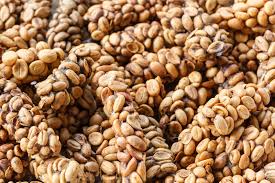
A recent study revealed that civet-processed Robusta coffee, known as Kopi Luwak, differs significantly from naturally harvested Robusta beans in its fatty acid composition and total fat content, providing new scientific insight into the unique aroma and flavour that make it famous.
- Kopi Luwak, also known as Civet Coffee, is one of the world’s most expensive and exclusive coffees.
- It’s made from beans that have been partially digested and excreted by the Asian Palm Civet.
- After the civet eats ripe coffee cherries, the beans are excreted, collected, washed, dried, and then roasted to produce coffee with a unique, smooth, and silky texture.
- The beans’ fermentation process results in a coffee with distinctive flavor notes of chocolate, caramel, and nuts, accompanied by low acidity.
- The distinct flavour may derive from the animal’s gut and digestive fluids.
- Gastric juices and enzymes from the civet’s stomach increase the level of citric acid in the beans, resulting in a coffee with a lemony tanginess and a more delicate aroma.
- This rare coffee is highly sought after and is considered a luxury item.
- However, the production of Kopi Luwak has sparked ethical concerns.
- Civets are sometimes kept in small cages and are force-fed coffee cherries, leading to calls for more ethical and sustainable production methods.
- Despite these concerns, Kopi Luwak remains a highly prized delicacy, and can cost more than US$1,300 per kilogram.
Leachate:
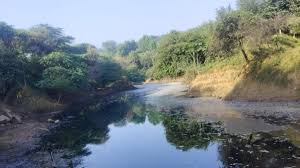
Environmentalists, wildlife activists, and locals recently sought immediate intervention by the Union Ministry of Environment, Forest and Climate Change into the recurring illegal discharge of highly toxic, untreated leachate into the Aravalis.
- Leachate is a highly toxic and contaminated liquid usually generated from municipal landfills.
- This toxic liquid accumulates at the bottom of the landfill.
- Landfill leachate water forms through waste decomposition, water infiltration, and chemical reactions within a landfill.
- The composition of leachate varies depending on the type of waste in the landfill, the landfill’s age, and environmental conditions such as rainfall and temperature.
- In general, leachate generally contains a mix of organic pollutants, inorganic compounds, heavy metals, and microbial contaminants.
- The chemical composition of leachate makes it dangerous; It can contaminate the environment and pose serious health risks if not properly managed.
- Leachate management is critical to landfill operations due to its potential to spread pollution and contaminate virgin groundwater sources.
- Strict environmental regulations mandate proper leachate collection and disposal to prevent environmental degradation.
Pseudorhombus bahudaensis : New Fish Species
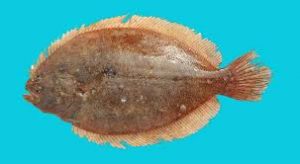
A team of researchers from the Estuarine Biology Regional Centre of the Zoological Survey of India recently discovered a new fish species named Pseudorhombus bahudaensis in the Bahuda estuary in Odisha.
- Pseudorhombus bahudaensis is a new species of flounder fish.
- It was discovered in the Bahuda estuary in Odisha.
- It bears close resemblance to Pseudorhombus arsius, commonly known as the Gangetic largetooth flounder.
- Scientists believe the species may be widespread across the Indo-Pacific region.
- Flounder is not a specific fish but rather a group of fish, specifically flatfish, that encompass different species and different families, though they all belong to the order Pleuronectiformes.
- They are bottom-dwelling fish, where they lie on their wide, flat bodies and have both eyes on one side of their heads (either the left or right, depending on the species).
- Flounder are a migratory species, mainly living in inshore water to a depth of around 50 m, and can move between saltwater and freshwater environments.
Mahe- Anti-Submarine Warfare Shallow Water Craft:

The Mahe Anti-Submarine Warfare Shallow Water Craft (ASW SWC) was delivered to the Indian Navy.
- It is the first of eight Anti-Submarine Warfare Shallow Water Crafts (ASW SWC).
- It was built by Cochin Shipyard Limited (CSL) Kochi.
- It was named after the historic port town in the Union Territory of Puducherry, symbolises India’s rich maritime heritage.
- The warship has been designed and constructed as per the classification rules of Det Norske Veritas (DNV).
- Features of Mahe
- It has a displacement of around 1,100 tons.
- It carries torpedoes, multi-functional anti-submarine rockets, and sophisticated radar and sonar systems that allow it to detect underwater threats with precision.
- The ship can also perform underwater surveillance, lay naval mines if required, and take part in smaller-scale coastal operations known as Low Intensity Maritime Operations.
- It will significantly augment the Indian Navy’s ASW capability, enhancing maritime security in the littorals.
Project Arunank:
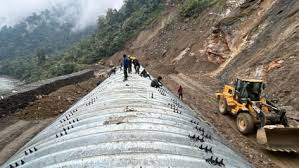
The Project Arunank of the Border Roads Organisation (BRO) marked its 18th Raising Day.
- Project Arunank has been implemented since 2008 by the Border Roads Organization (BRO) in Arunachal Pradesh.
- The name of the Project has been conceived from the name of the State of Arunachal Pradesh.
- Objective is to provide vital connectivity to remote valleys & forward areas of Arunachal Pradesh while meeting the operational requirements of the Armed Forces.
- It has adopted innovative and sustainable technologies such as Steel Slag, Cut-and-Cover Tunnels, Geo Cells, Plastic Sheets, GGBFS Concrete and Gabion Walls, enhancing the durability and environmental sustainability of road infrastructure in the region.
- Project Arunank has completed the 278 km Hapoli-Sarli-Huri Road, blacktopped for the first time since Independence, connecting one of the remotest regions of Kurung Kumey district.
- It played a critical role in developing communication systems for socio-economic and strategic growth in the region.
- Border Roads Organization is a road construction executive force in India that provides support to the Indian Armed Forces.
- It was formed on 7 May 1960 to secure India’s borders and develop infrastructure in remote areas of the north and north-east states of the country.
- It develops and maintains road networks in India’s border areas and friendly neighboring countries.
- Nodal Ministry: It works under the Ministry of Defence.
Duty-Free Tariff Preference (DFTP) Scheme:

The World Trade Organization credits India’s Duty-Free Tariff Preference (DFTP) scheme for boosting exports from the poorest nations
- It was initiated in 2008 and offers Least Developed Countries (LDCs) preferential access to the Indian market.
- The DFTP scheme aims to boost LDCs’ economic growth, diversify exports, and strengthen trade
- The objective of the scheme for LDCs is grant of tariff preferences on the exports of the Least Developed Countries on imports to India.
- Key Features of India’s DFTP Scheme:
- Under the DFTP scheme, products from LDCs are eligible for duty-free access to the Indian market.
- It is available to all LDCs recognized by the United Nations. India offers this preferential access to around 48 countries classified as LDCs, including countries in Africa, Asia, and the Pacific.
- A wide range of products from LDCs can benefit from the DFTP scheme. These include:
- Agricultural products: Fruits, vegetables, spices, and grains.
- Textiles and garments: Clothing, fabrics, and textiles made in LDCs.
- Handicrafts and traditional goods: Handwoven textiles, jewelry, and locally produced crafts.
- Leather goods: Leather garments, bags, and accessories.
- Minerals and metals: Products like gold, diamonds, and other raw materials.
Network Survey Vehicle:
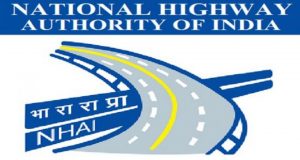
The National Highway Authority of India (NHAI) has announced that it will deploy Network Survey Vehicles (NSVs) in 23 states.
- Network Survey Vehicle is a specialized infrastructure management tool comprising vehicles equipped with advanced sensors and data acquisition systems.
- These vehicles systematically collect data on road inventory and condition of National Highways.
- It is usually a specialised van or SUV equipped with multiple sensors and instruments.
- It consists of Laser, Global Positioning System (GPS), Video image processing tools, High-resolution cameras, Inertial Measurement Units (IMU), and DMI (Distance Measuring Indicator).
- The survey will capture 13 types of defects, including crack measurement, ravelling, patch area, potholes, edge break, roughness, rutting, lane marking, etc.
- It will also cover details like carriageway type, road type, pavement and shoulder width, topography, median details, right of way, utilities, land use, etc.
- The data will be collected for all projects involving 2/4/6 and 8 lanes with NSV before the start of work and thereafter at regular intervals of six months.
- Data collected through NSV survey will be uploaded on NHAI’s ‘AI’ based portal Data Lake, where it will be analysed to transform data into knowledge and subsequent actionable insights.
- The collected data is useful to make decisions for pavement maintenance, asset management, and infrastructure planning.
- It will contribute to enhancing safety and efficiency of the National Highway Network across the country.
Children’s Booker Prize:

The Booker Prize Foundation announced the launch of the Children’s Booker Prize, a new global award for fiction written for children aged 8 to 12, to debut in 2027 with a prize.
- The Children’s Booker Prize is a new global literary award recognising fiction written for children aged 8–12 years, either in English or translated into English.
- It marks the first time children’s fiction will be recognised under the Booker brand.
- Established by the Booker Prize Foundation (UK) and funded by the AKO Foundation, a non-profit supporting arts, education, and environment.
- Aim:
- To inspire reading among children and nurture a new generation of lifelong readers and writers.
- To expand the global influence of literary excellence beyond adult fiction and encourage storytelling for younger audiences.
- Key Features:
- Eligibility: Open to fiction from any country, written for ages 8–12, published in the UK or Ireland.
- Languages: Both original English works and translations are eligible.
- Prize Money: (same as the adult Booker), funded by the AKO Foundation.
India to Host Commonwealth Games 2030:
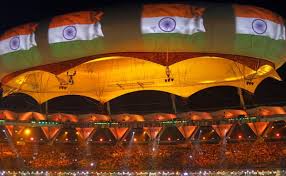
India is set to host the centenary edition of the Commonwealth Games (CWG) in 2030, with Ahmedabad chosen as the proposed venue, marking a key step in its bid for the 2036 Olympics.
- India last hosted the CWG in 2010 (Delhi).
- India has a strong CWG record, finishing 4th at Birmingham 2022.
- The 2026 CWG will take place in Glasgow, Scotland.
- Commonwealth Games is the world’s 2nd largest multi-sports event (after Olympic Games), bringing together athletes from 71 nations and territories and celebrating the diversity and unity of the Commonwealth.
- It was first held in 1930 in Hamilton, Canada as the British Empire Games.
- The event was known as the British Empire and Commonwealth Games in 1954, before being renamed the Commonwealth Games from 1978 onwards.
- Commonwealth Games Federation (CGF) is responsible for the direction and control of the Games.
- It is held once every 4 years and is often referred to as the Friendly Games, reflecting the core values of Humanity, Equality, and Destiny.
- It promotes sports, education, and recreation while celebrating the Commonwealth’s cultural and linguistic diversity.
India Forex Reserves: Surged
India’s foreign exchange reserves surged by billion, crossing the billion mark for the first time, mainly due to a sharp rise in gold reserves valued at over billion.The rise was driven by RBI’s gold purchases and an increase in global gold prices, while foreign currency assets slightly declined by billion amid exchange rate fluctuations. Foreign Exchange Reserves (Forex Reserves) are external assets held by a country’s central bank in foreign currencies, gold, Special Drawing Rights (SDRs), and reserve positions in the IMF. They act as a financial buffer to manage external shocks, maintain currency stability, and support international trade obligations. In India, the Reserve Bank of India (RBI) is the custodian and manager of the country’s forex reserves.
Aims / Objectives:
To stabilise the value of the Indian Rupee (INR) in case of currency fluctuations.
To ensure sufficient liquidity during balance of payments crises or external shocks.
To strengthen India’s image as a creditworthy and stable economy in global markets.
To meet import and debt servicing needs smoothly even during capital outflows.
India’s Western Ghats, under the significant concern:
The IUCN World Heritage Outlook 4 has placed India’s Western Ghats, under the “significant concern” category due to threats like climate change, unregulated tourism, and invasive species.The Western Ghats, also known as the Sahyadri Hills, are a north–south mountain range forming the crest of the western edge of the Deccan Plateau.They are recognised as a UNESCO World Heritage Site and one of the eight hottest biodiversity hotspots in the world.They run parallel to the Malabar Coast of the Arabian Sea, covering about 1,600 km from the Tapti River in Gujarat to Kanyakumari in Tamil Nadu.
The range traverses six states — Gujarat, Maharashtra, Goa, Karnataka, Kerala, and Tamil Nadu — covering an area of around 1,64,280 sq km.The chain is interrupted only by the 30 km wide Palghat Gap near 11°N latitude.
Veteran Actor Satish Shah Passes Away at 74:
Veteran Bollywood actor Satish Shah, best known for his iconic role as Indravadan Sarabhai in the hit sitcom Sarabhai vs Sarabhai, passed away in Mumbai at the age of 74.Satish Shah began his acting career with small roles in “Arvind Desai Ki Ajeeb Dastaan” (1978) and “Gaman” (1979).
He gained national fame with the 1983 cult classic “Jaane Bhi Do Yaaro”, directed by Kundan Shah, where he played the role of the corrupt municipal commissioner D’Mello.Known for his unmatched comic timing, he became a popular figure in both Bollywood and television.
Flipkart and Pine Labs have launched the Flipkart Bharat Yatra Card:
Flipkart, India’s leading e-commerce company, has partnered with fintech firm Pine Labs to introduce the Flipkart Bharat Yatra Card — a new digital prepaid card that makes paying for public transport faster and easier. Designed to work with India’s National Common Mobility Card (NCMC) system, it enables commuters to pay on metros, buses, and other transit services with a single smart card.The Bharat Yatra Card is a ₹50 prepaid NCMC-enabled smart card that can be used nationwide for public transportation. It’s reloadable and non-KYC, meaning users can quickly start using it without lengthy verification. The card allows offline payments up to ₹2,000 and supports UPI top-ups for easy recharges.Users can manage their card through the Bharat Yatra Card app, UPI apps, Bharat Connect (formerly BBPS), or at metro counters.
RBI Removes ₹10,000 Crore Lending Limit on Individual Corporate Borrowers:
The Reserve Bank of India (RBI) has withdrawn a 2016 circular that limited how much the banking system could collectively lend to a single large corporate borrower. This move marks a step towards liberalising bank lending norms while still maintaining safeguards against concentration risk through the Large Exposure Framework (LEF).According to the RBI, the corporate sector’s share in total bank lending has fallen by nearly 10% since 2016. This indicates that banks have already diversified their portfolios and are less dependent on large corporate borrowers.RBI Governor Sanjay Malhotra explained that the decision was part of the central bank’s broader goal to rationalise regulations balancing financial stability with the growth needs of the economy.
Lionel Messi wins the 2025 MLS Golden Boot:
Lionel Messi wins the 2025 MLS Golden Boot after scoring 29 goals in 28 matches for Inter Miami. His final-day hat-trick against Nashville SC sealed the title, capping a record-breaking season as Miami heads into the playoffs with hopes of winning their first MLS Cup.
First Woman to Lead the Church of England:
The Church of England, Dame Sarah Mullally has been announced as the new Archbishop of Canterbury-designate the first woman ever to be chosen for this prestigious role. Her appointment marks a new chapter for the Church, bringing both hope and responsibility as she prepares to lead millions of Anglicans across the world.Dame Sarah, aged 63, has had a remarkable career that bridges healthcare and faith. Before joining the Church, she spent over 35 years in the NHS, where she became the youngest-ever Chief Nursing Officer for England in 1999. She later felt a spiritual calling, becoming a priest in 2006 and later, in 2018, the first female Bishop of London — the third highest position in the Church of England.
NASA has confirmed that asteroid 2025 PN7 is now Earth’s new quasi-moon:
Earth has a new space companion — a small asteroid named 2025 PN7, recently confirmed by NASA. Though it’s not a real moon, it travels around the Sun in almost the same orbit as Earth, making it look like it’s following our planet through space.This “quasi-moon”, first discovered by astronomers at the University of Hawaii, is estimated to be 18 to 36 metres wide — about the height of a small building. While tiny by space standards, its discovery is fascinating for scientists studying how asteroids move near Earth.The asteroid 2025 PN7 is not directly orbiting Earth like our natural moon. Instead, it travels around the Sun on a path that nearly matches Earth’s. This unique movement makes it appear as if it’s staying close to us, even though it’s actually an independent traveler in space.NASA scientists describe it as being like “a friendly runner keeping pace on the same track — close enough to notice but never touching.”




